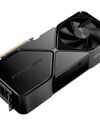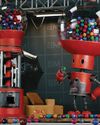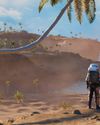
Creating the effect of battle damage on a 3D asset often takes the skill of multiple VFX artists, but is by all accounts a relatively straightforward process to work on. However, that simplicity can be misleading when faced with complex sequences involving multiple assets. Plus, most jobs will require you to iterate quickly, match your work to a plate, and handle production-level hero assets with hundreds of UDIMs from different VFX vendors.
This was the case for us at Whiskytree on a high-profile TV show our team recently worked on. While tools like Houdini and Blender’s Geometry Nodes would usually be the port of call for procedural tasks, we needed a workflow that would allow for render-time damage without affecting the underlying shaders or geometry of the asset.
To solve this creative problem, we considered manually sculpting damage for several sequences – a workflow that would tie up multiple artists for weeks with slow iterations – or developing a scalable and adaptable workflow that allowed us to make ongoing changes and feedback. Naturally we went for the latter, utilising our lighting and scene assembly tool, Gaffer, to facilitate the procedural aspects and stay responsive to the show’s everchanging art direction.
For this tutorial, I’ll provide an overview of the approach we took to tackling this challenge at Whiskytree, including how we created assets for the Boolean operations, positioned these assets onto a model, explored the procedural aspects, and layered in comp. We used the aforementioned trio of Gaffer, Maya and Nuke in our process, but you should still be able to apply these same steps to whichever tools you want to use in your own personal VFX production pipeline.
01 START WITH DAMAGE OUTLINES
Esta historia es de la edición August 2024 de 3D World UK.
Comience su prueba gratuita de Magzter GOLD de 7 días para acceder a miles de historias premium seleccionadas y a más de 9,000 revistas y periódicos.
Ya eres suscriptor ? Conectar
Esta historia es de la edición August 2024 de 3D World UK.
Comience su prueba gratuita de Magzter GOLD de 7 días para acceder a miles de historias premium seleccionadas y a más de 9,000 revistas y periódicos.
Ya eres suscriptor? Conectar

Nvidia GeForce RTX 4080 Super Founders Edition
On the surface, the GeForce RTX 4080 Super is barely any different from the vanilla GeForce RTX 4080 that was launched in 2022.

MCU VFX moments
Pros choose their favourite CG shots from the Marvel Cinematic Universe

Nosing around on Fallout
We sniff out the story of how FutureWorks brought The Ghoul to life with the creation of his iconic noseless face

DISCOVER RED GIANT GEO'S HANDY TOOLS
Heather Sterland introduces one of the newest additions to Maxon's suite of Red Giant VFX plugins with an atmospheric lunar creation

BUILD AND ANIMATE A FUN-FILLED ROBOT
Expand your horizons with Julio Benavides, who reveals his workflow for creating a charming hard-surface character

DESIGN STRIKING SCULPTS AT SPEED
Learn how to build 3D characters that balance visual quality and efficient workflow with pro advice from Oh Holy Mary

CREATE A CANYON ENVIRONMENT
Build a stunning desert setting with an expert walkthrough from Romain Eboli, who uses high-quality Quixel assets

TURN A 2D CONCEPT INTO AN INCREDIBLE 3D-PRINTED FIGURE
Concept artist Emily Chapman shares her process for sculpting, printing and painting an outstanding model to put on display

Goodbye SAIGON
Trevor Hogg gets held captive by multiple versions of Robert Downey Jr.while uncovering the visual effects of HBO's spy series The Sympathizer

IMPRESSIONISTIC REALISM
Trevor Hogg learns how the artisan aesthetic came to be for The Wild Robot